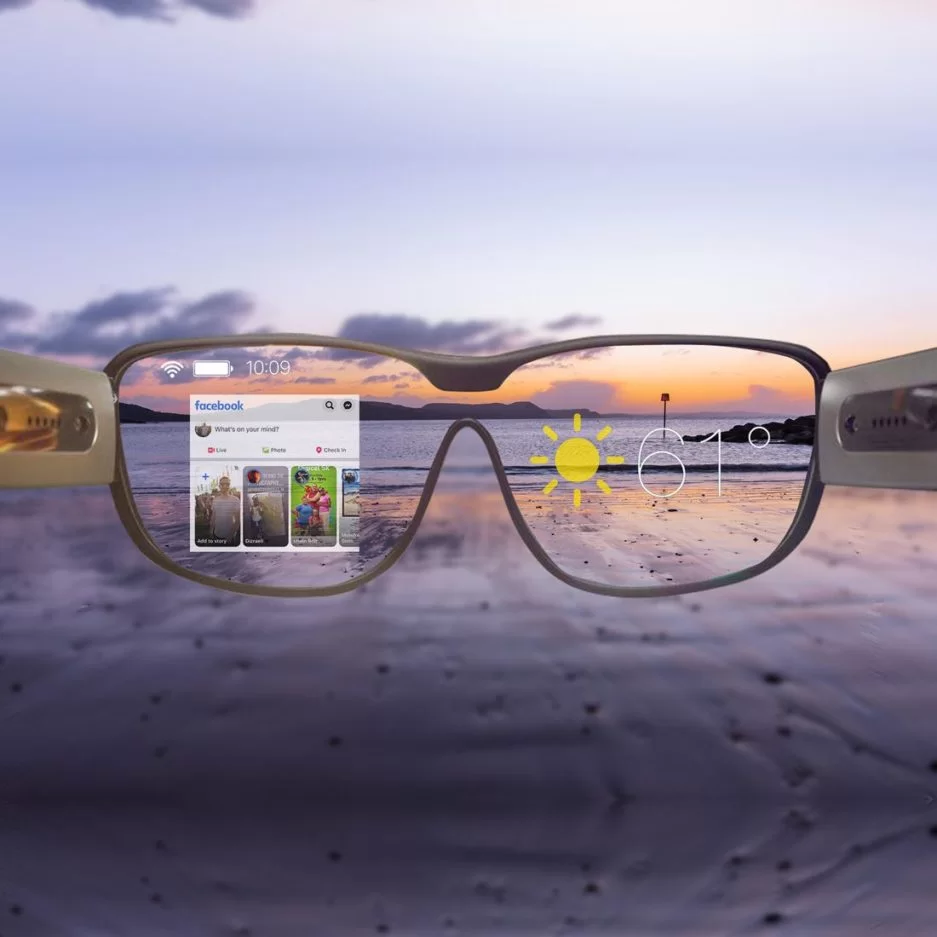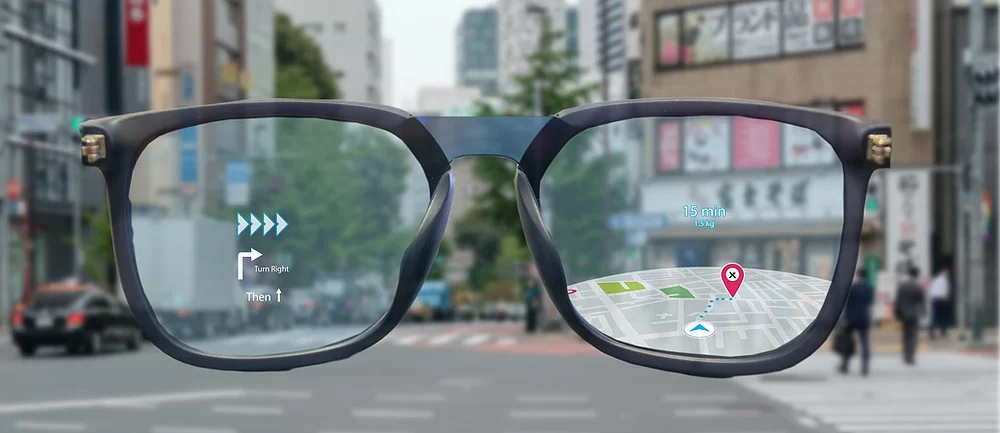Facebook presented its long-awaited smart glasses in collaboration with Ray-Ban, announcing its entry into the fledgling wearables industry with an emphasis on picture capture rather than augmented reality.
The social network on Thursday showed off the glasses, called Ray-Ban Stories—a direct rival to Snapchat’s Spectacles. The $299 Facebook glasses, which use EssilorLuxottica SA-owned Ray-Ban’s classic Wayfarer frame style, let users take photos and video, listen to music, and answer phone calls. While they lack AR, the technology that overlays digital content on the physical world, Facebook says it eventually plans to embed that functionality.
“We are building towards AR glasses as the next computing platform,” Monisha Perkash, a product director at Facebook, said in an interview. “We see it as a very important first step towards that vision.”
Facebook is entering an industry that is becoming increasingly saturated. Snap Inc., the parent company of Snapchat, initially introduced Spectacles with a built-in camera for recording video in 2016. Amazon.com Inc. released smart glasses in 2019 that can accept calls and utilize Alexa, but they don’t feature AR.
Snap also launched a version of Spectacles with AR capabilities in May, though they aren’t yet accessible to the general public. According to Bloomberg News, Apple Inc. aims to join the glasses market with an AR-capable product later this decade.
To the naked eye, the glasses don’t look much different than classic Ray-Bans. But the plain appearance conceals an array of smart features: dual 5-megapixel camera sensors; embedded Bluetooth 5.0 and Wi-Fi to synchronize with a phone; a battery; enough storage for 500 pictures; and speakers. A user can snap a photo by pressing and holding a button on the right side of the glasses, or can record video by pressing it once.
A touch area on the right side of the spectacles may be used to control music, a voice assistant, and phone calls. A user may change volume by swiping left or right, tapping to play, stop, and skip music, or double tapping to answer and finish phone conversations. There’s also a rudimentary Facebook voice assistant.
Facebook didn’t say when it will have true AR glasses on the market, but such a device is part of the company’s long-term strategy to build out what Chief Executive Officer Mark Zuckerberg has been calling the metaverse—digital worlds where people spend time together using devices powered by virtual reality. Zuckerberg has said he thinks virtual and augmented reality-powered devices are the next major platform for human communication, after mobile phones, eventually replacing some in-person interactions.
If Facebook is successful in the device market, it will be able to build out its advertising and messaging business without having to rely on operating systems and gadgets created by competitors such as Apple Inc. and Google. The company’s hardware division also sells Oculus VR headsets and Portal video-chat devices, and it’s planning to add AR features to Oculus products later this year.

While the product is a late entry, coming several years after Snap’s Spectacles and eight years after the introduction of Google Glass—the search giant’s early attempt at AR glasses—Facebook’s offering may still raise privacy questions with consumers. The glasses will collect data that Facebook says it needs, like battery life and Wi-Fi information, plus a user’s login credentials for a required Facebook account. Users will also have the option to share more data, including the number of photos they have taken and the length of videos.
Because the glasses aren’t standalone, music and calls are sent to them through Bluetooth from an iPhone or Android phone. Facebook is demanding the usage of the Facebook View app for iPhone and Android to administer and set up the glasses. The media will display in an area of the app when a user takes a photo or video. The user can then opt to save or modify the photo or video by downloading it to their device.

Ray-Ban Stories are sunglasses that combine the capabilities of earphones like Apple’s AirPods with the ability to take photographs. Given that smartphone photographs are considerably superior and many phone users already have earphones, it’s unclear whether such a device would find a huge market. They’re also a lot more expensive than ordinary Ray-Ban Wayfarers, which usually cost between $100 and $200.
The glasses are being launched in the U.S., Canada, U.K., Ireland, Italy, and Australia, and include a charging case similar to the one that houses AirPods. The glasses on their own get about six hours of battery life with moderate use, and they’re not waterproof, according to Facebook. The $299 model has standard frames, while the companies will also offer a $329 polarized model and a $379 version with transition lenses. Prescription versions are coming, too.
The glasses have a physical switch on the inside to turn off the capture features, while they will also flash an LED light on the front so people know they are being recorded or in a photo.
Home Automation >> Other >> Other Smart Devices >> Facebook’s Smart Glasses Can Make Calls and Take Photos, But They Lack Augmented Reality